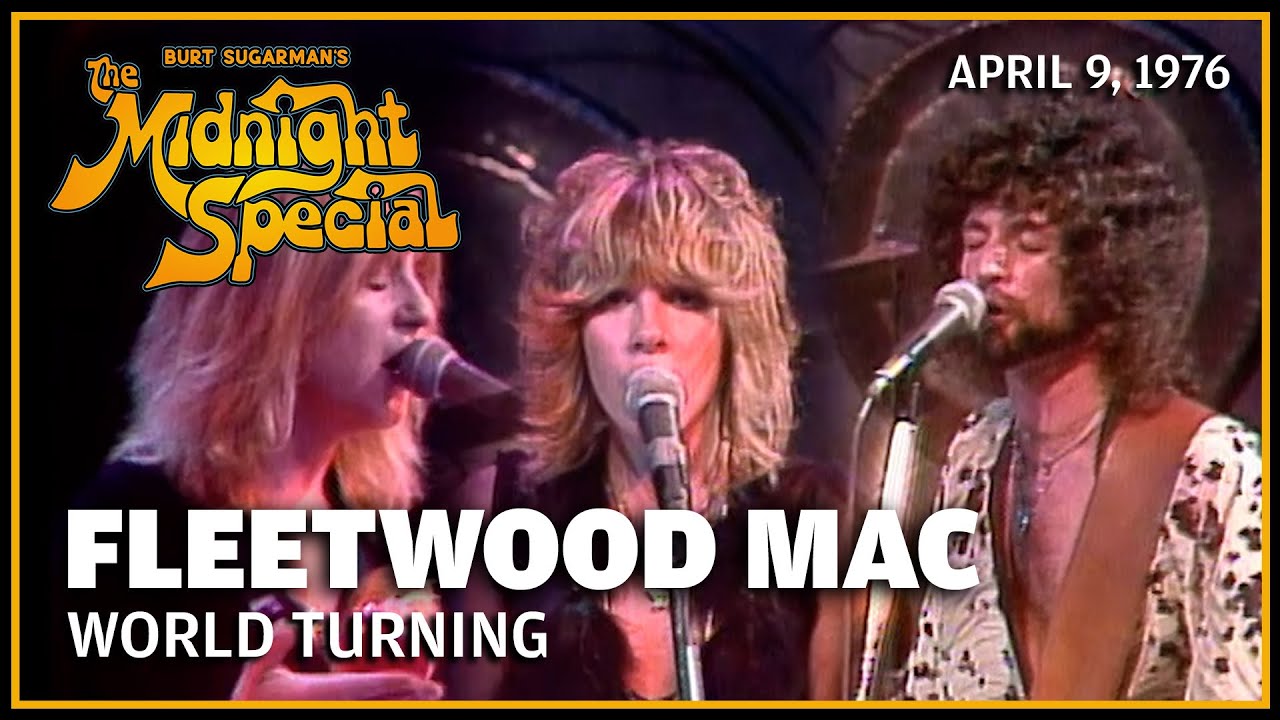The Departure Of Fleetwood Mac's First Vocalist: A Look At The Pre-"Rumours" Era

Table of Contents
Peter Green: The Founding Father and His Musical Genius
Peter Green, a guitarist of unparalleled skill and a songwriter of remarkable depth, was the driving force behind Fleetwood Mac's early success. Born Peter Allen Greenbaum in 1946, he formed the band in 1967, bringing with him a blues-soaked sensibility that would define their initial sound. His influence extended far beyond his instrumental prowess; his songwriting provided the backbone of their early catalog, establishing Fleetwood Mac as a powerful force in the British blues scene.
- Notable Compositions: "Black Magic Woman," "Albatross," "Oh Well," "Man of the World," and "Need Your Love So Bad" are just a few examples of Peter Green's songwriting genius that propelled Fleetwood Mac to early fame.
- Unique Guitar Style: Green's distinctive guitar style, characterized by his fluid phrasing, subtle vibrato, and innovative use of the slide, set him apart from contemporaries. He possessed an almost ethereal touch on the instrument, creating sounds both haunting and soulful.
- Shaping the Blues-Rock Sound: His vision, coupled with the talents of Mick Fleetwood and John McVie, forged Fleetwood Mac's early sound—a potent blend of blues, rock, and psychedelic elements. Early albums like Fleetwood Mac (1968) and Then Play On (1969) showcased this unique style.
The Seeds of Change: Internal Conflicts and Musical Differences
Despite early success, the seeds of change were sown within Fleetwood Mac. Increasing tensions, fueled by drug use, mental health struggles, and creative differences, began to fracture the band's cohesion. The pressure of fame and the challenges of maintaining creative control within a group dynamic exacerbated these existing problems.
- Conflicts and Disagreements: Disputes over musical direction, management decisions, and personal relationships created a volatile environment.
- Changing Musical Direction: The band’s experimentation with different sounds and styles further strained the relationship between band members.
- Managerial Issues: Poor management decisions contributed to the internal strife and added to the overall stress within the band.
The Departure and its Immediate Aftermath
Peter Green's departure from Fleetwood Mac in 1970 marked a pivotal turning point. While the exact circumstances remain debated, it's clear that a combination of mental health challenges and creative differences led to his exit. The immediate aftermath was turbulent. The band struggled to maintain momentum, facing the monumental task of replacing such a significant musical figure.
- Departure Date: May 1970 is widely accepted as the month of Peter Green's departure.
- Replacing His Contributions: Subsequent vocalists and songwriters attempted to fill the void, leading to an evolution in the band's sound and direction.
- Impact on Popularity and Output: The band's popularity faltered initially; the loss of Green's unique talent was felt deeply.
The Legacy of Peter Green: Lasting Influence on Fleetwood Mac
Despite his relatively short tenure, Peter Green's impact on Fleetwood Mac's trajectory is undeniable. His legacy extends beyond his time with the band, influencing their future musical endeavors and cementing his place in rock history. The bluesy foundation he laid permeated their sound, even as they evolved towards pop-rock.
- Influence on Later Albums: Elements of Peter Green's songwriting style and bluesy sensibility can still be detected in later Fleetwood Mac albums, albeit in a transformed context.
- Enduring Popularity of Solo Work: Peter Green's solo career, while tragically cut short by mental health challenges, produced several notable works, showcasing his enduring talent and influence.
- Rock and Roll Hall of Fame: Peter Green's significant contributions to music earned him a well-deserved place in the Rock and Roll Hall of Fame (inducted in 1998).
Conclusion:
The departure of Fleetwood Mac's first vocalist, Peter Green, represents a watershed moment in the band's history. Understanding this pivotal period in the pre-"Rumours" era is key to fully grasping their evolution and remarkable longevity. From the bluesy beginnings shaped by Green's genius to the pop success that followed, the band’s journey is a testament to both its resilience and its ever-changing musical identity. To delve deeper into this fascinating era and learn more about the contributions of Fleetwood Mac's early vocalists, including the profound impact of Peter Green on Fleetwood Mac, explore biographies, music archives, and documentaries. Understanding Fleetwood Mac's pre-Rumours era is vital to appreciating the band’s complete legacy.

Featured Posts
-
 Who Is Angelina Censori Bianca Censoris Sister Revealed
May 05, 2025
Who Is Angelina Censori Bianca Censoris Sister Revealed
May 05, 2025 -
 Exploring The Concerns Surrounding Kanye Wests Relationship With Bianca Censori
May 05, 2025
Exploring The Concerns Surrounding Kanye Wests Relationship With Bianca Censori
May 05, 2025 -
 Fleetwood Mac The Worlds First Supergroup Rumours And Reality
May 05, 2025
Fleetwood Mac The Worlds First Supergroup Rumours And Reality
May 05, 2025 -
 16 Year Olds Death Stepfather Indicted On Multiple Charges
May 05, 2025
16 Year Olds Death Stepfather Indicted On Multiple Charges
May 05, 2025 -
 Simone Biles Kentucky Derby Appearance Riders Up Call Announced
May 05, 2025
Simone Biles Kentucky Derby Appearance Riders Up Call Announced
May 05, 2025
Latest Posts
-
 Will Final Destination 6 Break Franchise Records Box Office Projections Analyzed
May 05, 2025
Will Final Destination 6 Break Franchise Records Box Office Projections Analyzed
May 05, 2025 -
 Im Sad Final Destination Bloodline Trailer Shows Tony Todds Final Role
May 05, 2025
Im Sad Final Destination Bloodline Trailer Shows Tony Todds Final Role
May 05, 2025 -
 30 Million Opening Final Destination 6 Box Office Predictions
May 05, 2025
30 Million Opening Final Destination 6 Box Office Predictions
May 05, 2025 -
 Final Destination 6 North American Box Office Projections Exceed 30 Million
May 05, 2025
Final Destination 6 North American Box Office Projections Exceed 30 Million
May 05, 2025 -
 Final Destination Bloodline Longest Film In The Franchise
May 05, 2025
Final Destination Bloodline Longest Film In The Franchise
May 05, 2025
